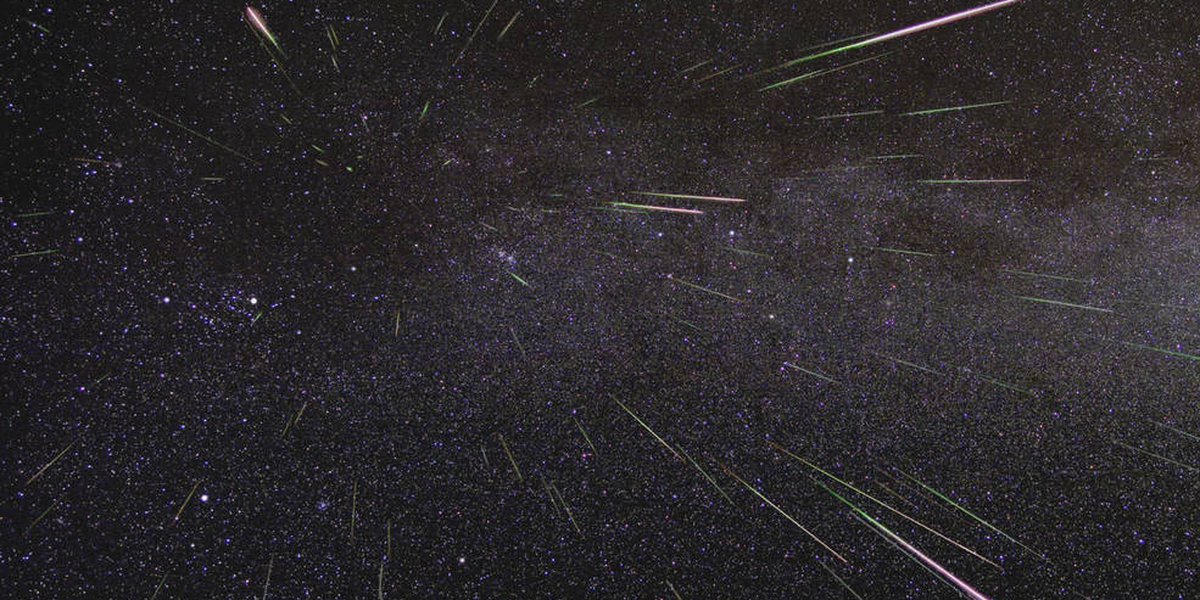Best Meteor Shower of the Year Peaks This Weekend
The Perseid meteor shower is widely regarded as one of the best meteor showers of the year, captivating skywatchers around the world. This annual celestial event is set to reach its peak this weekend, providing a stellar show for stargazers and astronomy enthusiasts. Let’s dive into everything you need to know about the Perseid meteor shower.
1. What is the Perseid meteor shower?

The Perseid meteor shower is an annual event that occurs when Earth passes through the debris left by the Comet Swift-Tuttle along its orbit. These debris particles enter Earth’s atmosphere, creating streaks of light known as meteors or shooting stars.
2. When is the peak of the Perseid meteor shower?

This year, the Perseid meteor shower is predicted to reach its peak on the nights of August 11 and 12.
3. Moon interference

Unfortunately, the moon’s brightness this year will hamper the observation of the peak of the Perseids. The moon turned full on August 7 and will be at a bright waning gibbous phase during the peak nights, causing the moonlight to overpower the faint meteors.
4. Best viewing conditions

To maximize your chances of observing the Perseid meteor shower despite the moon’s interference, it is advisable to find a location away from city lights where the dark sky can enhance the visibility of the meteors.
5. Online viewing options

If you’re unable to witness the Perseids in person, you can still enjoy the spectacle through online webcasts. The Slooh community observatory and the Virtual Telescope Project will be hosting live webcasts of the Perseid meteor shower on August 12. Make sure to tune in and witness the beauty of the cosmic event from the comfort of your own home.
6. How to prepare for meteor shower viewing

Here are some tips to help you make the most out of your Perseid meteor shower experience:
6.1 Choose the right location
Find a spot away from light pollution, such as parks, countryside areas, or observatories, to have a clearer view of the night sky.
6.2 Check the weather forecast
Prioritize nights with clear skies to ensure better visibility of the meteors and a more enjoyable experience.
6.3 Bring essential equipment
Consider bringing a blanket or lawn chair, insect repellent, snacks, and hot beverages to stay comfortable while observing the meteor shower.
6.4 Arrive early and be patient
Arriving early will give your eyes time to adjust to the darkness. Remember that meteor showers can be unpredictable, so be patient and allow yourself ample time to witness the meteor spectacle.
7. Safety precautions

While enjoying the Perseid meteor shower, it’s crucial to keep your safety in mind. Here are a few precautions to follow:
7.1 Avoid bright lights
Avoid looking directly at any bright lights, including flashlights or smartphone screens, as they can impair your night vision.
7.2 Dress appropriately
Wear warm clothing, as nights can get chilly, especially during the early morning hours when the meteor shower peaks.
7.3 Watch out for wildlife
Be mindful of your surroundings and avoid disturbing any wildlife that may be present in the area where you are viewing the meteor shower.
Conclusion
The Perseid meteor shower offers a dazzling display of shooting stars, making it a must-see event for sky enthusiasts. Despite the moon’s interference this year, finding a dark location and following safety precautions can still result in a memorable experience. Remember to be patient, look up, and marvel at the beauty of the cosmos.
FAQs
Q1: Can I see the Perseid meteor shower from a city?
A1: While it’s possible to spot some meteors from urban areas, the light pollution will diminish the visibility. It’s best to find a location away from city lights for a better experience.
Q2: Can I photograph the Perseid meteor shower?
A2: Yes, you can capture the Perseids with a camera equipped with manual settings and a wide-angle lens. Use a sturdy tripod and experiment with long exposures to capture the fleeting meteors.
Q3: What time should I start observing the Perseid meteor shower?
A3: The best time to start observing the Perseid meteor shower is after midnight when the radiant point of the meteors will be higher in the sky. However, meteors can be sporadic earlier in the evening as well.
Q4: Will the Perseid meteor shower be visible in the Southern Hemisphere?
A4: Yes, the Perseid meteor shower can be seen from the Southern Hemisphere, although the number of visible meteors may be lower compared to the Northern Hemisphere.
Q5: How many meteors can I expect to see during the Perseid meteor shower?
A5: The Perseids are known for their high meteor rates, with the potential to produce up to 100 meteors per hour during the peak. However, this number varies and can be influenced by factors such as moonlight and atmospheric conditions.


Add Comment